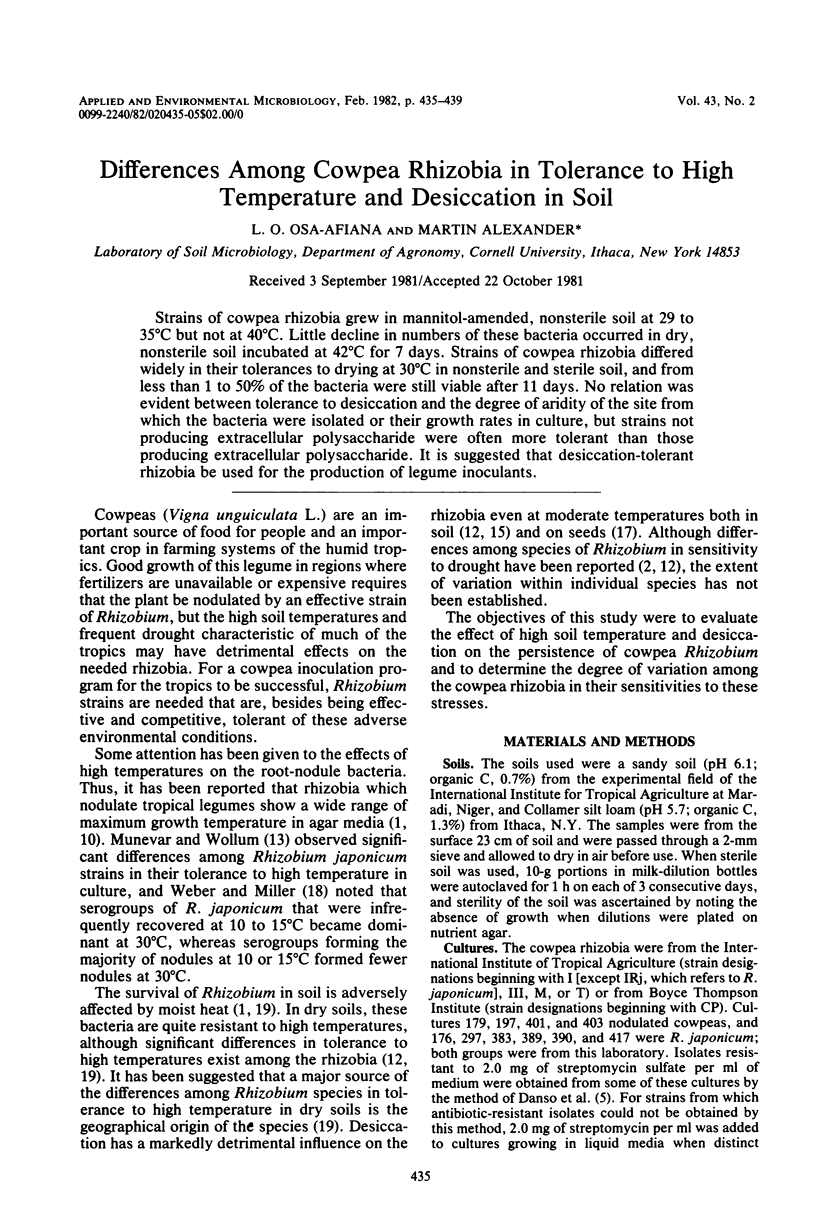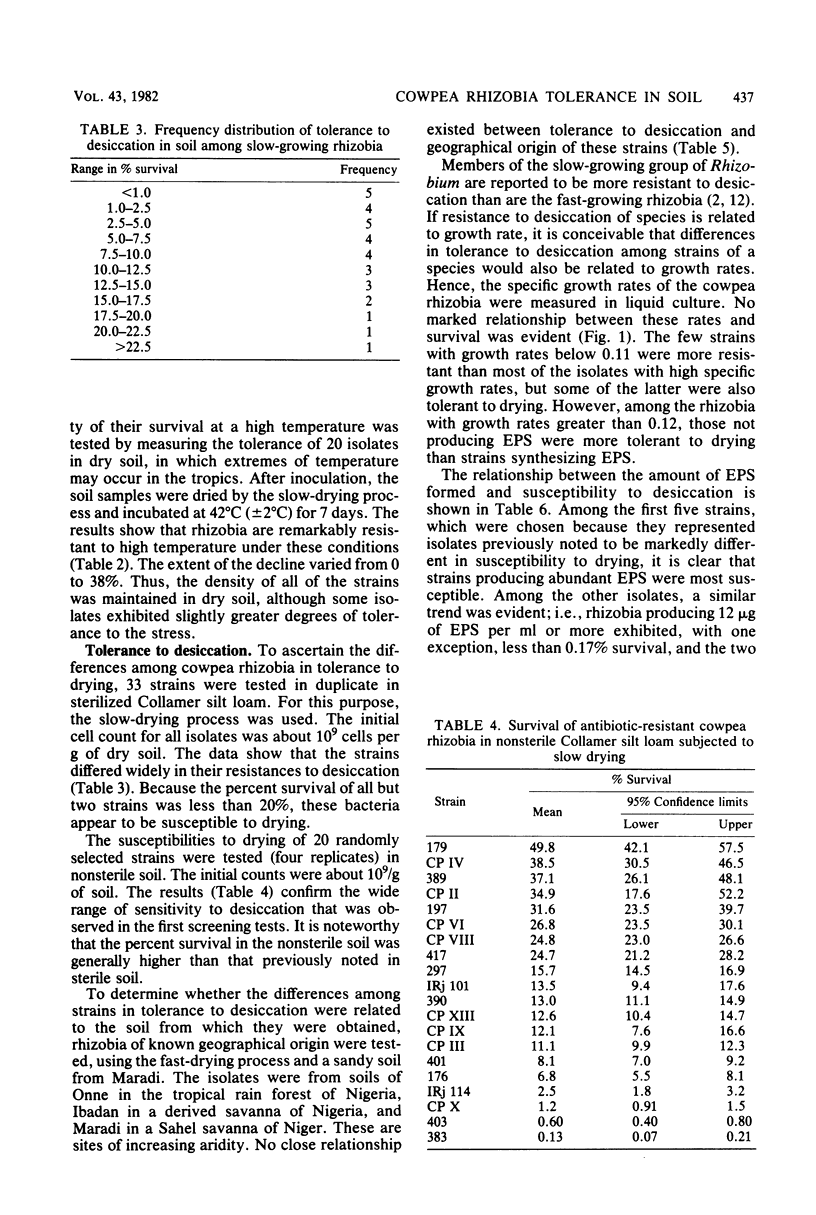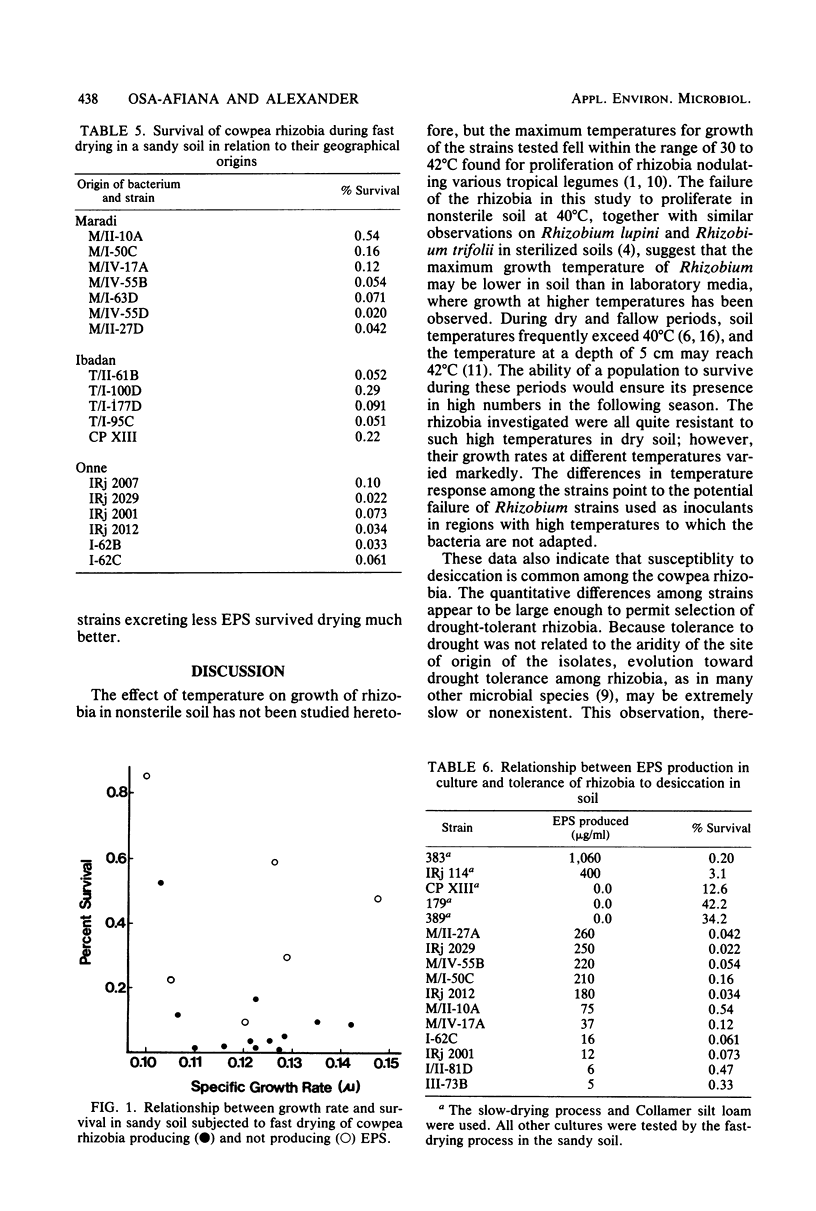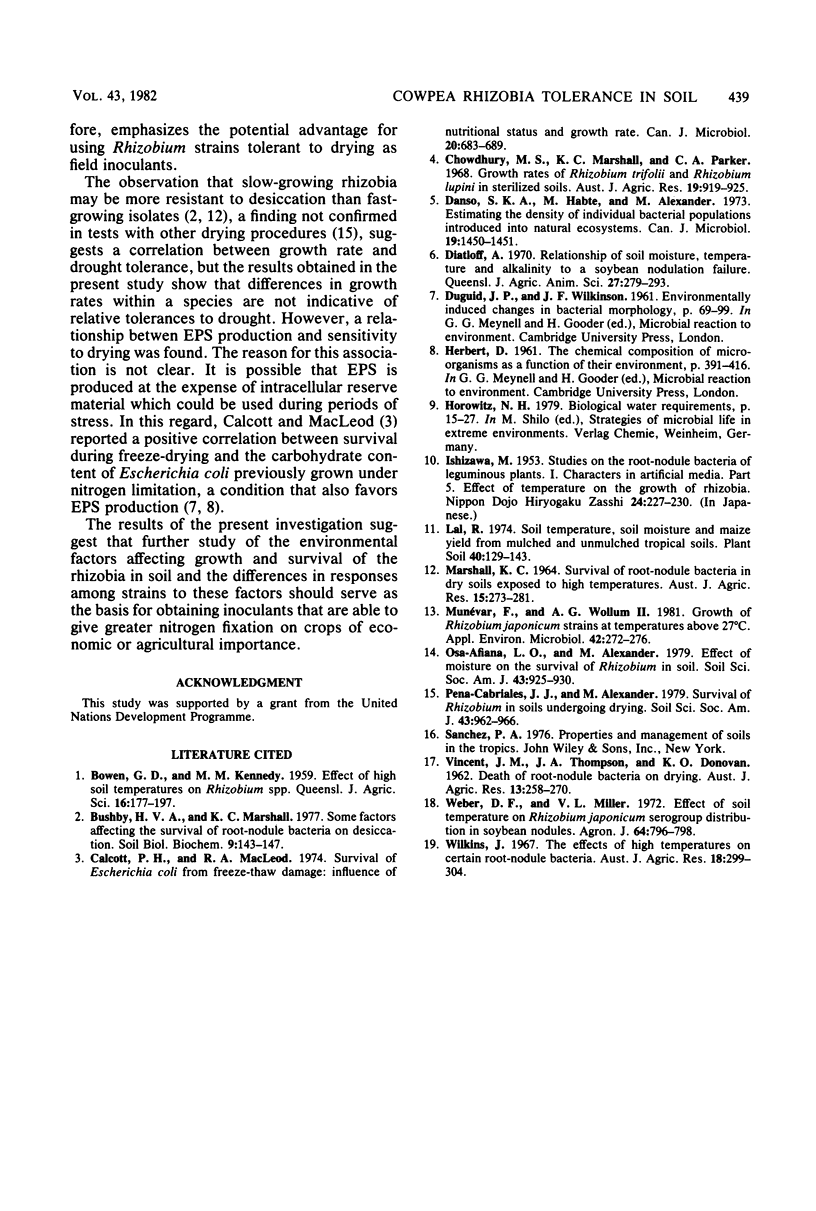Abstract
Strains of cowpea rhizobia grew in mannitol-amended, nonsterile soil at 29 to 35°C but not at 40°C. Little decline in numbers of these bacteria occurred in dry, nonsterile soil incubated at 42°C for 7 days. Strains of cowpea rhizobia differed widely in their tolerances to drying at 30°C in nonsterile and sterile soil, and from less than 1 to 50% of the bacteria were still viable after 11 days. No relation was evident between tolerance to desiccation and the degree of aridity of the site from which the bacteria were isolated or their growth rates in culture, but strains not producing extracellular polysaccharide were often more tolerant than those producing extracellular polysaccharide. It is suggested that desiccation-tolerant rhizobia be used for the production of legume inoculants.
Full text
PDF




Selected References
These references are in PubMed. This may not be the complete list of references from this article.
- Calcott P. H., MacLeod R. A. Survival of Escherichia coli from freeze-thaw damage: influence of nutritional status and growth rate. Can J Microbiol. 1974 May;20(5):683–689. doi: 10.1139/m74-104. [DOI] [PubMed] [Google Scholar]
- Danso S. K., Habte M., Alexander M. Estimating the density of individual bacterial populations introduced into natural ecosytems. Can J Microbiol. 1973 Nov;19(11):1450–1451. doi: 10.1139/m73-234. [DOI] [PubMed] [Google Scholar]
- Munévar F., Wollum A. G. Growth of Rhizobium japonicum Strains at Temperatures Above 27 degrees C. Appl Environ Microbiol. 1981 Aug;42(2):272–276. doi: 10.1128/aem.42.2.272-276.1981. [DOI] [PMC free article] [PubMed] [Google Scholar]


